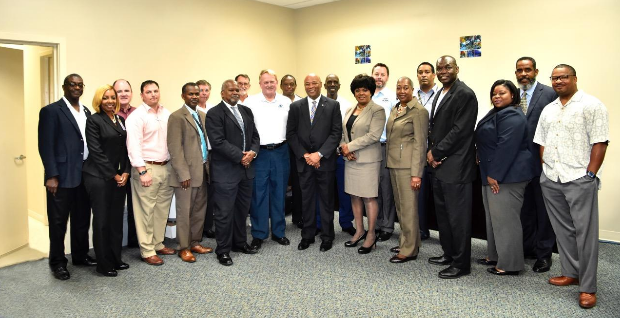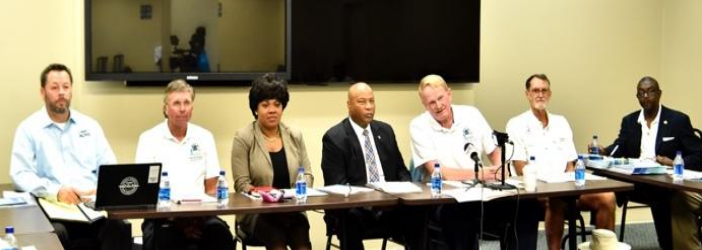|
From:TheBahamasWeekly.com Ministry of Tourism Updates
Nassau, Bahamas – Earlier this month The Bahamas Ministry of Tourism and Aviation (MOTA) in conjunction with several aviation industry partners that makes up the Bahamas Aviation Council, convened at the Nassau Airport Development Company’s office (NAD) to collectively unify its body, strengthen cohesiveness and proactively strategize for the future. The Council, led by Charles Albury, Permanent Secretary, MOTA included representatives of the MOTA’s (Nassau and USA offices), NAD, Bahamas Departments of Customs, Immigration and Civil Aviation, Royal Bahamas Police Force, Out Island Promotion Board, Bahamas Flying Ambassadors, AOPA, Fernandez Bay Village, Grand Bahama Airport Company, Aviation Professionals Agency, ATM Operations, Caribbean Sky Tours, Cherokee Air, Jet Aviation, Odyssey Aviation, Tropic Ocean Airways, BTC, Bahamas Air Navigational Services, and BAATO. Rick Asper, President of Aviation Professionals Agency was appointed Council Chairman and was charged by Permanent Secretary Albury, to write a white paper that addresses the number one challenge pilots coming to The Bahamas face; the constitution of commercial flying verses private flying into The Bahamas as interpreted by the Bahamas Customs and that of the Department of Civil Aviation.
According to Captain Greg Rolle, pilot and Sr. Director of Sports and Vertical Markets, MOTA, “aviation plays a pivotal role in our overall success in tourism. With The Bahamas’ 700 islands scattered over 100,000 square miles, it is important for us to ensure that we have the adequate systems, protocols and resources in place to not only grow our number one industry, particularly in our family Out Islands that are unable to accommodate larger commercial aircrafts, but also for us to maintain our competitive edge as a multiple islands vacation destination and simultaneously, protect the sustainability and longevity of this vital industry.” “In order for us to do that, we have to be unified in our approach of not only addressing pressing concerns, but ensuring that proper plans are in place to mitigate against or stop entirely, any fallouts arising from same,” he said. In 2016 The Bahamas received 81,607 private pilots. Of them, 3,669 went to Grand Bahama, while the Out Islands received some 50,523 pilots. The revenue per person generated from guests arriving to the islands by private planes doubles that of those visiting as guests on commercial aircraft. Among some of the matters being worked on by the Aviation Council are the improvement in revenue collection for The Bahamas, cross training for The Bahamas government agencies (Customs, Immigration and Civil Aviation), computerization of AOE forms for pilots, creation of annual aircraft decal fees versus per visit entry fees, Enhanced Online Customs Procedures (EOCP), general aviation traffic and the tracking of U.S. aircrafts coming into The Bahamas, enhancement of border protection and security operations, database development for future budgeting and marketing, scholarship opportunities for Young Eagles and aviation students and the formulation of a standardized ‘Pilots Bills of Rights’ between all Bahamian airports. The Council will reconvene on February 8, 2018 at a venue to be determined.
|

